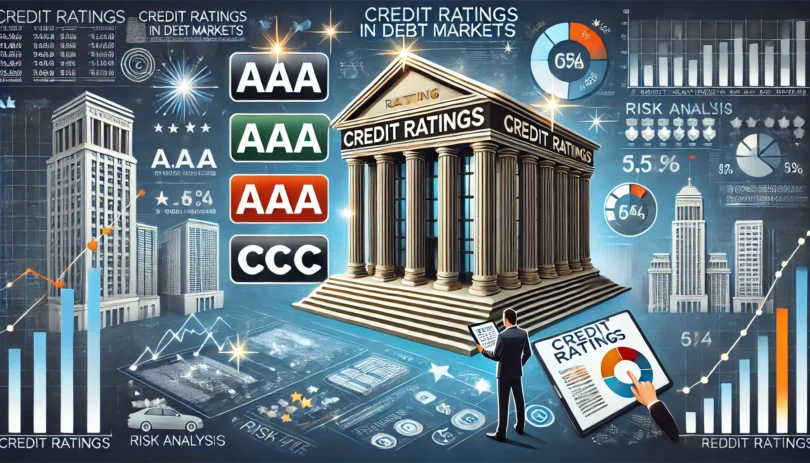Introduction
Credit ratings are critical in debt markets, influencing borrowing costs, investor confidence, and access to capital. They provide an independent assessment of a borrower’s creditworthiness, guiding investment decisions and pricing in debt transactions. This chapter explores the significance of credit ratings, the methodology behind them, and their impact on debt markets.
- What are Credit Ratings?
1.1 Definition
- A credit rating is an evaluation of a borrower’s ability to repay debt, issued by credit rating agencies (CRAs) such as Moody’s, S&P Global, and Fitch.
1.2 Types of Ratings
- Issuer Ratings: Assess the overall creditworthiness of an entity.
- Issue Ratings: Evaluate the credit risk of specific debt instruments.
1.3 Rating Categories
- Investment-Grade Ratings:
- High credit quality and low default risk (e.g., AAA, AA, A, BBB).
- Speculative-Grade Ratings:
- Higher risk but potentially higher yields (e.g., BB, B, CCC).
- Importance of Credit Ratings
2.1 Impact on Borrowing Costs
- Higher ratings reduce interest rates by signaling lower risk to investors.
- Lower ratings increase borrowing costs due to perceived higher risk.
2.2 Access to Capital
- Investment-grade ratings attract institutional investors.
- Speculative ratings may limit access to certain funding sources.
2.3 Market Confidence
- Credit ratings enhance transparency and trust in financial markets.
- How Credit Ratings are Determined
3.1 Evaluation Factors
- Quantitative Analysis:
- Financial ratios like debt-to-equity, interest coverage, and EBITDA margins.
- Qualitative Analysis:
- Industry outlook, management quality, and competitive position.
3.2 Rating Methodology
- Agencies use proprietary models to assign ratings based on historical data and forecasts.
- Challenges with Credit Ratings
- Conflicts of Interest: Agencies may face pressure from issuers paying for ratings.
- Lagging Indicators: Ratings may not adapt quickly to changing financial conditions.
Conclusion
Credit ratings are indispensable in debt markets, shaping borrowing costs, investment decisions, and market dynamics. A strong understanding of credit ratings enables organizations to leverage them for better financial outcomes.








Leave a Comment
You must be logged in to post a comment.